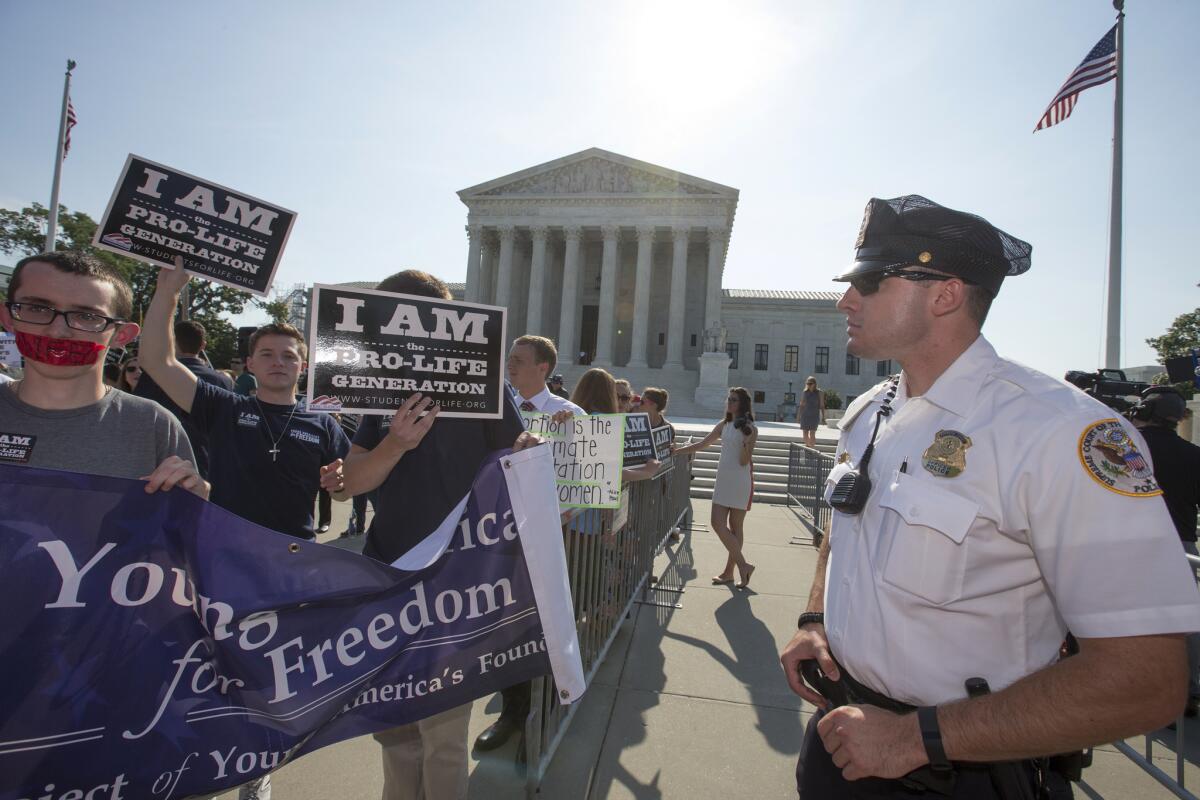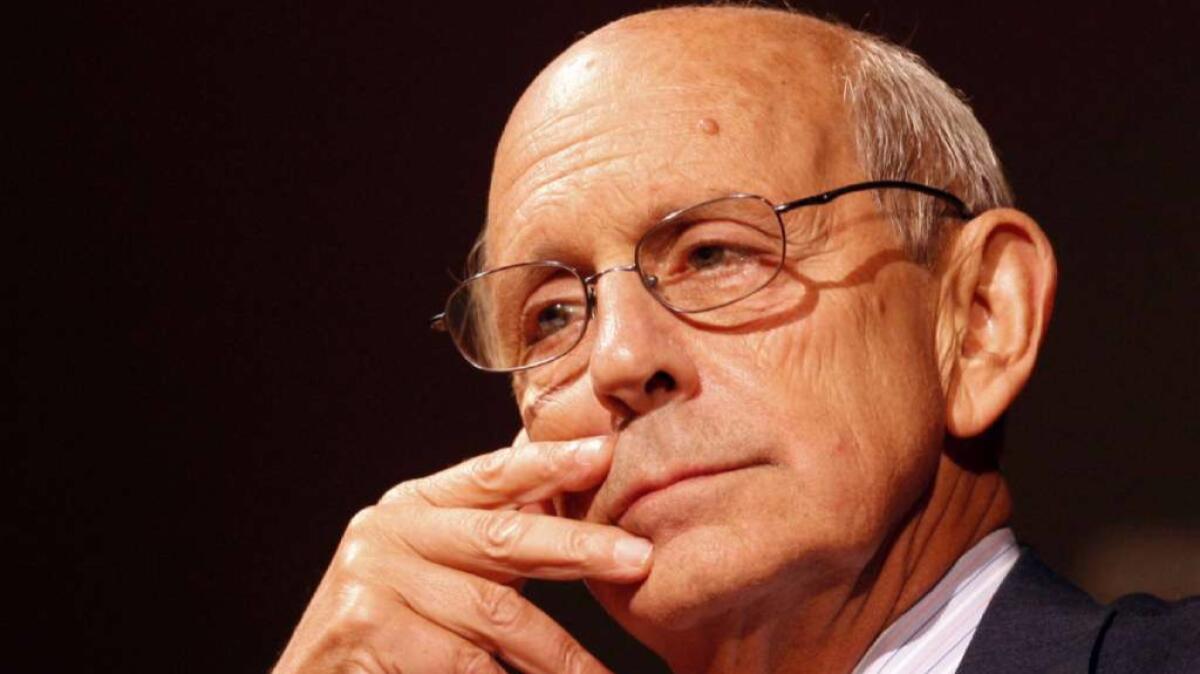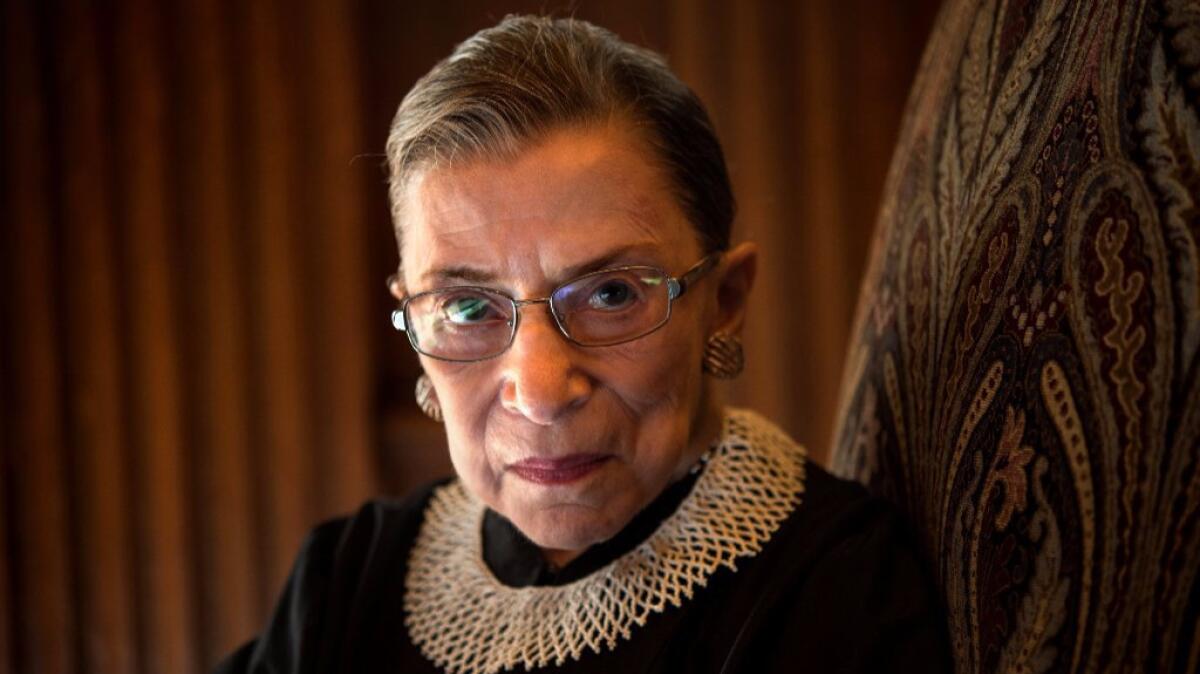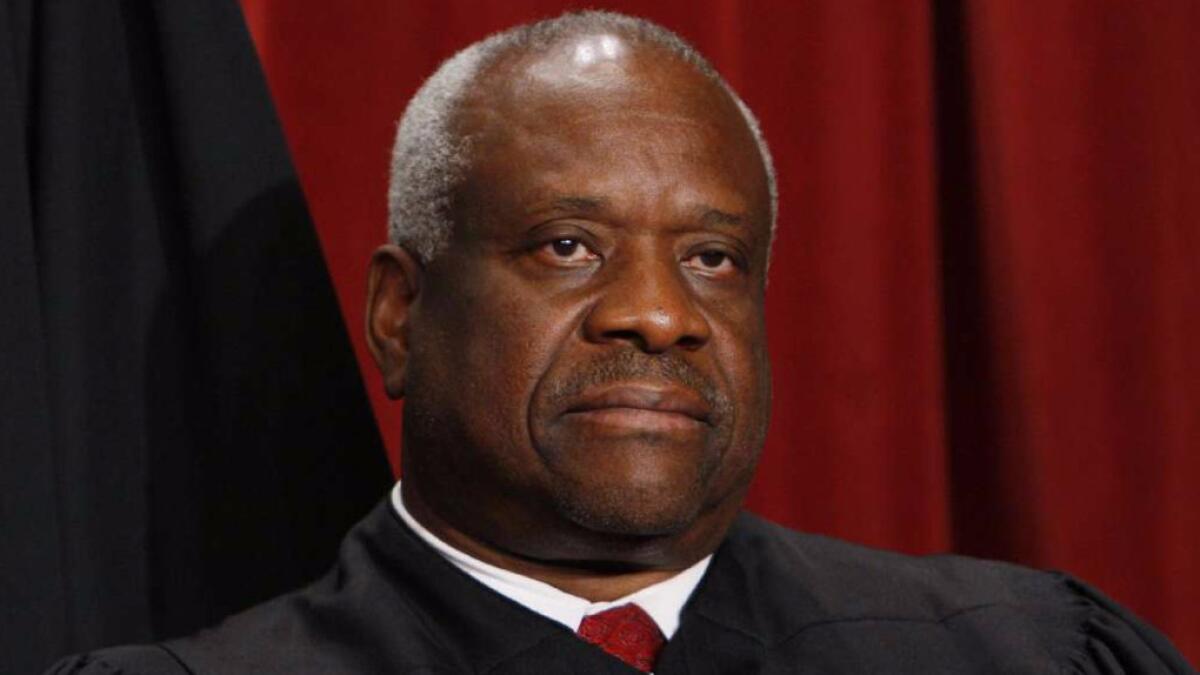Key passages from the Supreme Court’s abortion decision

- Share via
Reporting from Washington — The Supreme Court issued a 5-3 decision Monday that limits states’ ability to restrict access to an abortion by passing unnecessary health and safety regulations.
Justice Stephen Breyer issued the majority opinion in the case, which has been called the court’s most definitive stance on abortion since 1992.
The ruling invalidates a Texas law that imposed requirements that forced about half of the state’s abortion clinics to close.

Here are some of the most interesting passages from Breyer:
“We conclude that neither of these provisions offers medical benefits sufficient to justify the burdens upon access that each imposes. Each places a substantial obstacle in the path of women seeking a previability abortion, each constitutes an undue burden on abortion access, and each violates the federal Constitution.”
“Texas seeks to force women to travel long distances to get abortions in crammed-to-capacity superfacilities. Patients seeking these services are less likely to get the kind of individualized attention, serious conversation, and emotional support that doctors at less taxed facilities may have offered.”
Responding to the Texas requirement that clinics providing abortions meet the minimum standards of a surgical center, Breyer noted:
“The surgical-center requirement also provides few, if any, health benefits for women, poses a substantial obstacle to women seeking abortions, and constitutes an “undue burden” on their constitutional right to do so.
Regarding the Texas requirement that doctors performing abortions have admitting privileges at nearby hospitals, the majority noted that evidence found that hospitals often condition admitting privileges on reaching a certain number of admissions per year, a requirement many abortion providers would not be able to meet.
“In a word, doctors would be unable to maintain admitting privileges or obtain those privileges for the future, because the fact that abortions are so safe meant that providers were unlikely to have any patients to admit.”
Noting that procedures like colonoscopies and in-office dental surgeries are more dangerous than abortions, he added:
“The upshot is that this record evidence, along with the absence of any evidence to the contrary, provides ample support for the District Court’s conclusion that ‘[m]any of the building standards mandated by the act and its implementing rules have such a tangential relationship to patient safety in the context of abortion as to be nearly arbitrary.’ [46 F. Supp. 3d, at 684.] That conclusion, along with the supporting evidence, provides sufficient support for the more general conclusion that the surgical-center requirement ‘will not [provide] better care or . . . more frequent positive outcomes.’ [Ibid.] The record evidence thus supports the ultimate legal conclusion that the surgical-center requirement is not necessary.”
On the ability of Texas medical providers to meet the demand for abortions following clinic closures, he said:
“We disagree that, according to common sense, medical facilities, well known for their wait times, operate below capacity as a general matter. And the fact that so many facilities were forced to close by the admitting privileges requirement means that hiring more physicians would not be quite as simple as the dissent suggests. Courts are free to base their findings on commonsense inferences drawn from the evidence. And that is what the District Court did here.”

In a concurring opinion, Justice Ruth Bader Ginsburg skewered the law from Texas that was challenged before the court:
“Given those realities, it is beyond rational belief that H.B. 2 could genuinely protect the health of women, and certain that the law ‘would simply make it more difficult for them to obtain abortions.’ [Planned Parenthood of Wis., 806 F. 3d, at 910.] When a state severely limits access to safe and legal procedures, women in desperate circumstances may resort to unlicensed rogue practitioners, faute de mieux, at great risk to their health and safety.”

In the court’s dissent, Justice Clarence Thomas argued the court rewrote its previous definition of an “undue burden” on a woman seeking an abortion:
“Even taking Casey as the baseline, however, the majority radically rewrites the undue-burden test in three ways. First, today’s decision requires courts to ‘consider the burdens a law imposes on abortion access together with the benefits those laws confer.’ [Ante, at 19.] Second, today’s opinion tells the courts that, when the law’s justifications are medically uncertain, they need not defer to the legislature, and must instead assess medical justifications for abortion restrictions by scrutinizing the record themselves. [Ibid.] Finally, even if a law imposes no ‘substantial obstacle’ to women’s access to abortions, the law now must have more than a ‘reasonabl[e] relat[ion] to . . . a legitimate state interest.’”
Follow me on Twitter: @Jill_Ornitz
ALSO:
Supreme Court overturns Texas abortion restrictions
Abortion-rights activists celebrate on the Supreme Court plaza after decision
More to Read
Sign up for Essential California
The most important California stories and recommendations in your inbox every morning.
You may occasionally receive promotional content from the Los Angeles Times.










